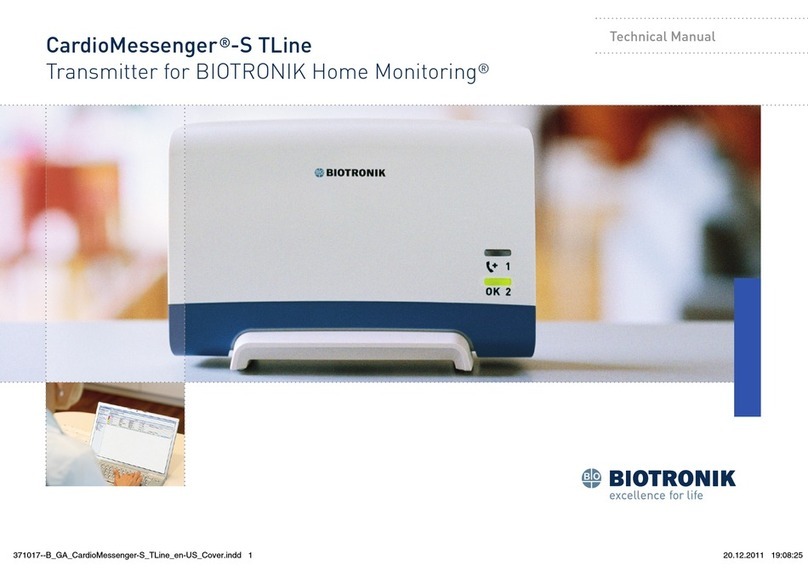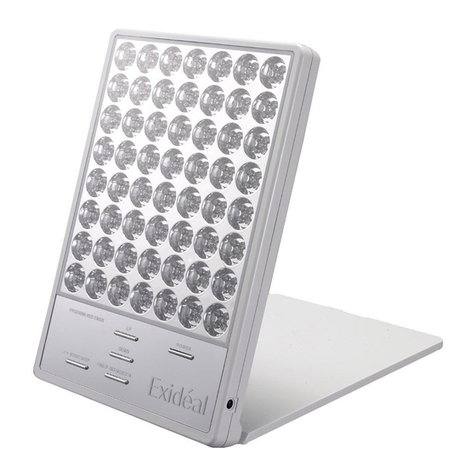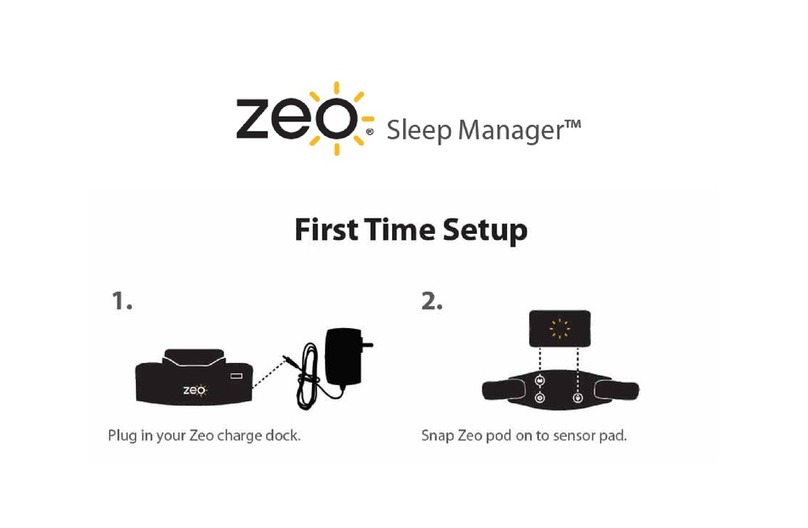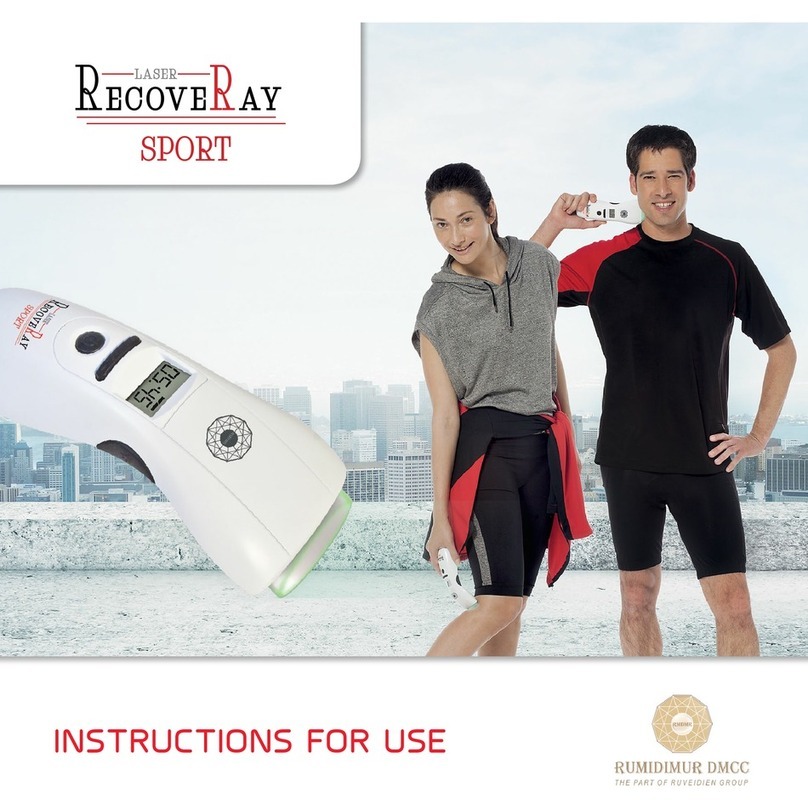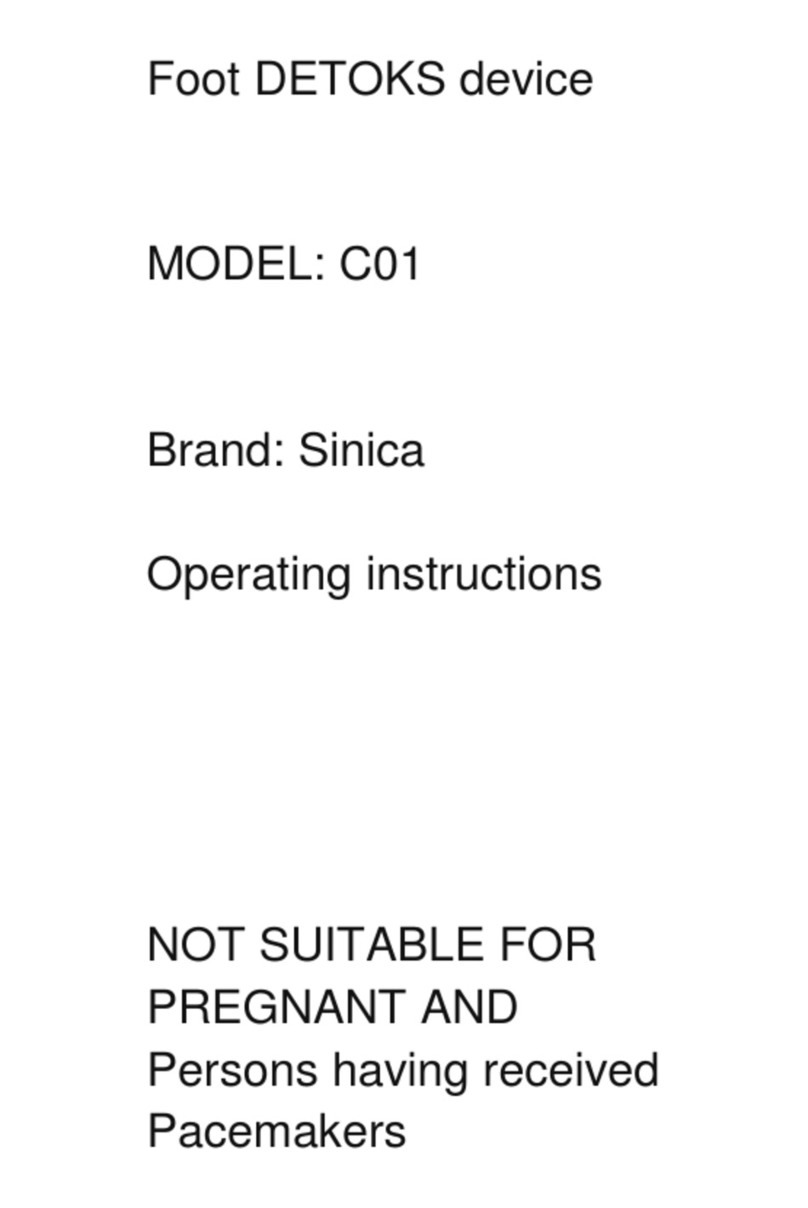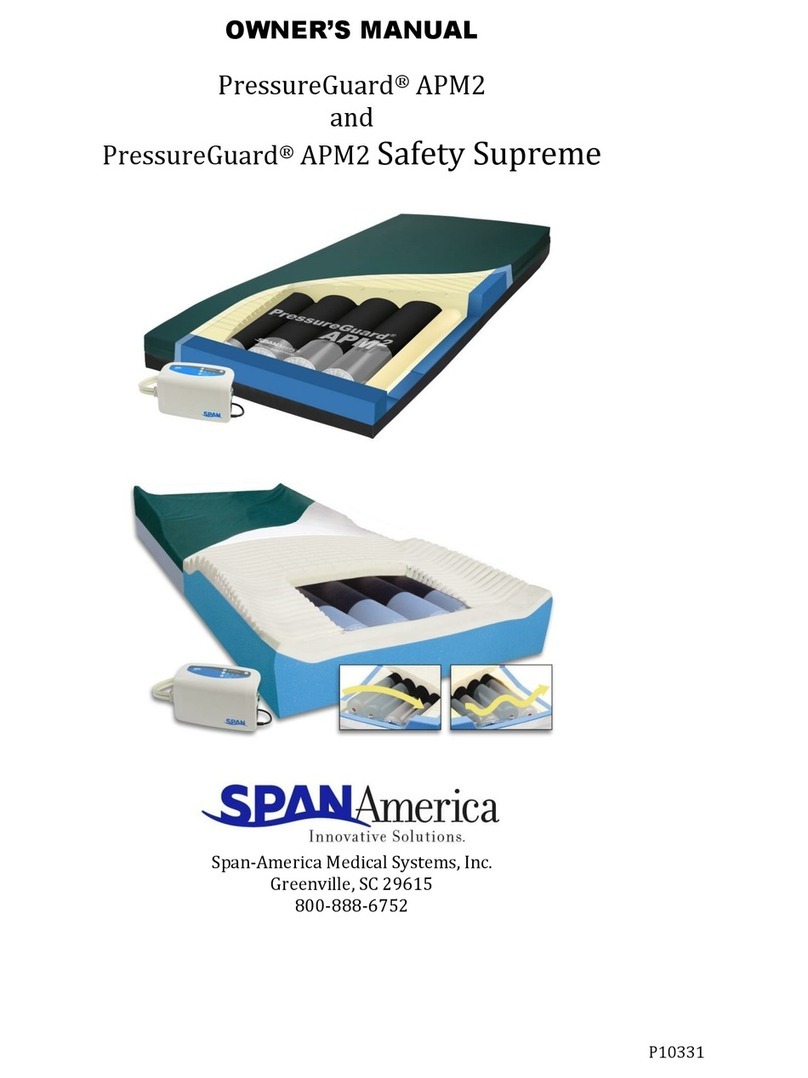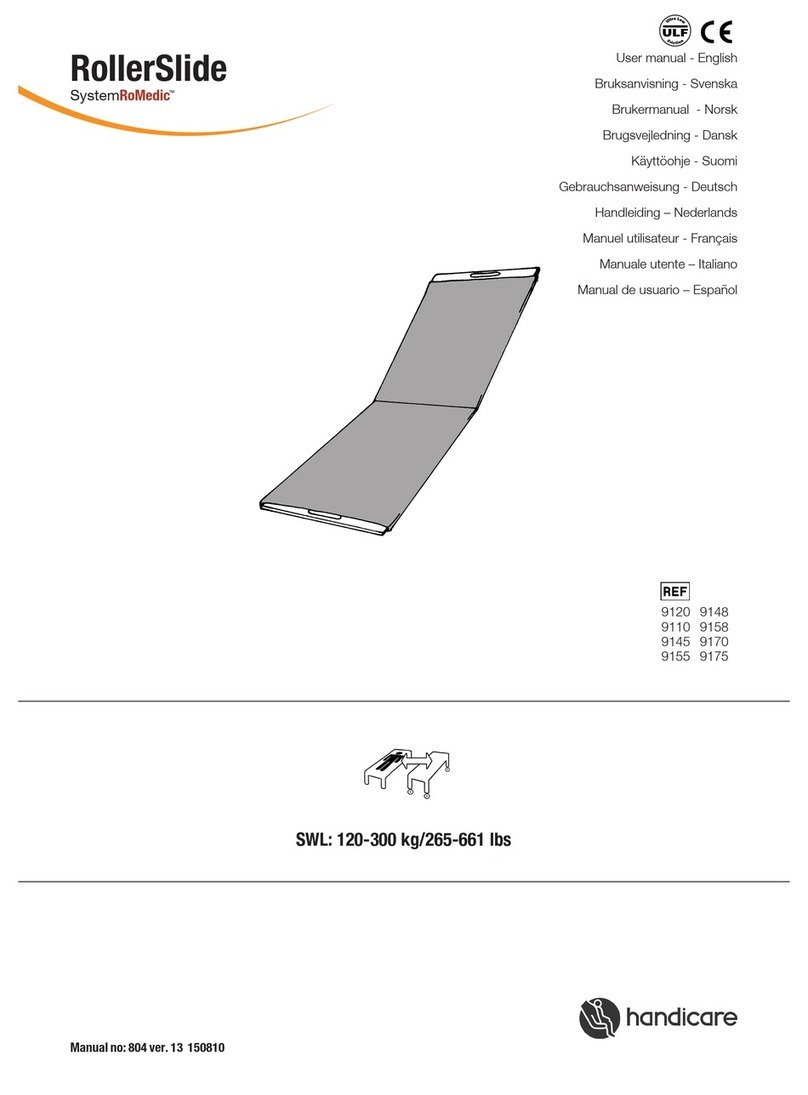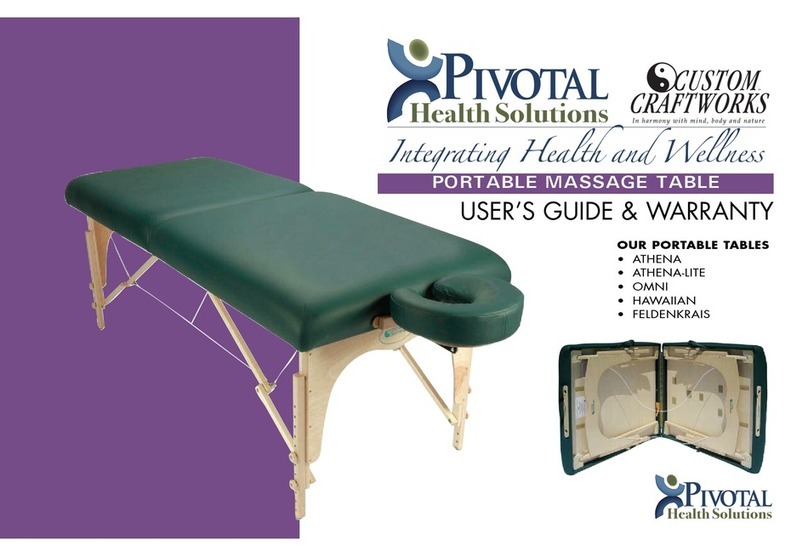HeartWare HVAD Pump User manual

Instructions for Use
HeartWare™HVAD™
System


10
9
8
7
6
5
4
3
2
1
Appendix
Reference
Guides
Alarms and
Emergencies
Patient
Management
Surgical
Implant and
Explant
Monitor
Peripherals
and
Accessories
HVAD®PumpOverviewIntroduction
Table of Contents
1.0 Introduction..............................................................................................................................................................1
1.1 Introduction ........................................................................................................................... 2
1.2 Indications for Use................................................................................................................. 2
1.3 Contraindications ................................................................................................................. 2
1.4 Warnings ......................................................................................................................... 3
1.5 Precautions .................................................................................................................... 7
1.6 Potential Complications..................................................................................................... 10
1.7 Pivotal US Clinical Study: Bridge-to-Transplant ................................................................ 11
1.8 US Clinical Study: Destination Therapy ............................................................................. 20
1.9 Destination Therapy Supplemental Study........................................................................ 38
2.0 HeartWare™HVAD™System Overview....................................................................................................51
2.1 HVAD®Pump and Surgical Tools ....................................................................................... 51
2.2 HVAD®Controller ................................................................................................................ 52
2.3 HeartWare®Monitor............................................................................................................ 53
2.4 HVAD®Controller Power Sources...................................................................................... 53
2.5 HeartWare®Battery Charger............................................................................................. 54
2.6 Carrying Cases and Shower Bag ...................................................................................... 54
3.0 HeartWare™HVAD™System Pump...........................................................................................................57
3.1 Principles of Operation....................................................................................................... 57
3.2 Physiologic Control Algorithms.......................................................................................... 59
3.2.1 Flow Estimation.......................................................................................................... 59
3.2.2 [Ventricular Suction Detection] Alarm ................................................................... 60
3.3 HVAD®Pump Operating Guidelines................................................................................. 63
3.4 Expected Useful Life of the HVAD®Pump ........................................................................ 63
3.5 Device Tracking and Reporting Requirements ............................................................... 63
4.0 HeartWare™HVAD™System Peripherals and Accessories...................................................... 65
4.1 HVAD®Controller Connections ....................................................................................... 65
4.2 HVAD®Controller............................................................................................................... 69
4.3 Using the HeartWare®Batteries ....................................................................................... 73
4.4 Using the HeartWare®Battery Charger .......................................................................... 79
4.5 Using the HVAD® Controller AC Adapter or DC Adapter ............................................. 82
4.6 Carrying Cases .................................................................................................................. 83
4.7 Recommended Equipment for Use at Home ................................................................ 84
Table of Contents

HVAD®Instructions for Use
10
9
8
7
6
5
4
3
2
1
Appendix Reference
Guides
Alarms and
Emergencies
Patient
Management
Surgical
Implant and
Explant
Monitor
Peripherals
and
Accessories
HVAD®Pump Overview Introduction
5.0 Using the HeartWare®Monitor................................................................................................................ 85
5.1 General Overview .............................................................................................................. 85
5.2 Informational Screens......................................................................................................... 87
5.3 System Screens.................................................................................................................... 89
5.4 Downloading Controller Log Files ................................................................................... 100
5.5 Updating Software on the HVAD®Controller ................................................................ 101
5.6 Monitor Shutdown............................................................................................................. 105
5.7 HeartWare®Monitor Care................................................................................................ 105
6.0 Surgical Implant and Explant of the HVAD®Pump..................................................................... 107
6.1 Preparing for Implantation............................................................................................... 107
6.2 Programming HVAD®Controllers .................................................................................... 109
6.3 HVAD®Pump Pre-Implant Test and Pump Assembly ................................................... 111
6.4 Surgical Implant Procedure ............................................................................................. 115
6.5 HVAD®Pump Explant........................................................................................................ 121
7.0 Patient Management and Education ..................................................................................................123
7.1 Postoperative Management........................................................................................... 123
7.1.1 Setting Speed with HVAD®Pump.......................................................................... 124
7.1.2 Blood Pressure Maintenance................................................................................. 125
7.1.3 Anticoagulation ...................................................................................................... 125
7.1.4 Right Heart Failure................................................................................................... 126
7.1.5 Arrhythmias .............................................................................................................. 126
7.1.6 Infection Control Guidelines.................................................................................. 126
7.2 Driveline Care.................................................................................................................... 127
7.3 Emergency Management ............................................................................................... 128
7.4 Physical Rehabilitation .................................................................................................... 128
7.5 Patient Education ............................................................................................................. 128
8.0 HeartWare™HVAD™System Alarms and Emergencies.............................................................129
8.1 Alarm Overview ................................................................................................................ 129
8.2 High Priority Alarms............................................................................................................ 130
8.3 Medium Priority Alarms..................................................................................................... 132
8.4 Low Priority Alarms ............................................................................................................ 134
8.5 Multiple Alarms.................................................................................................................. 135
8.6 How to Silence (Mute) Alarms ......................................................................................... 136
8.7 How to Change the Controller........................................................................................ 137
9.0 Quick Reference Guide for Alarms......................................................................................................... 141
10.0 Appendix.................................................................................................................................................................145
Appendix A System Components............................................................................................ 145
Appendix B ........................................................................................ 146
Appendix C EMC Manual Requirements Guidance Document ......................................... 148
Appendix D ............................................................................................... 152

10
9
8
7
6
5
4
3
2
1
Appendix
Reference
Guides
Alarms and
Emergencies
Patient
Management
Surgical
Implant and
Explant
Monitor
Peripherals
and
Accessories
HVAD®PumpOverviewIntroduction
1.0 Introduction
Introduction
1.1 Introduction..................2
1.2 Indications for Use.......2
1.3 Contraindications.........2
1.4 Warnings......................3
1.5 Precautions..................7
1.6 Potential
Complications............... 10
1.7 Pivotal US Clinical Study:
Bridge-to-Transplant..11
1.8 US Clinical Study:
Destination Therapy....20
1.9 Destination Therapy
Supplemental Study...38
Foreword
The HeartWare™HVAD™System is indicated for use
under the direct supervision of a licensed healthcare
practitioner or by personnel trained in its proper use.
Clinical users include physicians, registered nurses,
perfusionists and biomedical engineers. Implant of
surgeon trained by HeartWare-authorized personnel.
Clinical users of the HeartWare™HVAD™System should
attend HeartWare training, should have a working
knowledge of the principles of ventricular assist devices
(VADs), and should be aware of the physical and
psychological needs of patients undergoing VAD
support. Patients and caregivers should complete a user
training program and demonstrate their ability to use the
system prior to independence.
Clinicians should read the entire Instructions for Use
before system operation. This manual may serve
as a reference for detailed information including
implant and maintenance. This manual is not intended
to replace comprehensive educational programs
or to supersede acquired knowledge or proper
medical judgment.
1

2HVAD®Instructions for Use
10
9
8
7
6
5
4
3
2
1
Appendix Reference
Guides
Alarms and
Emergencies
Patient
Management
Surgical
Implant and
Explant
Monitor
Peripherals
and
Accessories
HVAD®Pump Overview Introduction
1.0 Introduction
In this manual, there will be the following symbols:
1.1 Introduction
The HeartWare™HVAD™System is designed to assist a weakened, poorly
functioning left ventricle. The HeartWare™HVAD™System is designed
for in-hospital and out-of-hospital settings, including transportation via
™HVAD™System utilizes
a centrifugal blood pump, the HVAD®Pump (the “pump”), which is
implanted in the pericardial space with left ventricular apex to
conduit, which is partially sintered, is integrated with the pump and
attached to the pump. A percutaneous driveline connects the
pump to an external controller. The controller, powered by two
batteries or by one battery and electricity from a wall or car outlet,
regulates pump function and monitors the system. The monitor is used to
display system performance and to change controller operating
parameters. A battery charger is also included.
All components of the HeartWare™HVAD™System are designed to be
used only in conjunction with each other. They are neither compatible
nor intended to be used with other manufacturer’s devices.
1.2 Indications for Use
The HeartWare™HVAD™System is indicated for hemodynamic support in patients with
advanced, refractory left ventricular heart failure; either as a Bridge to Cardiac Transplantation
(BTT), myocardial recovery, or as Destination Therapy (DT) in patients for whom subsequent
transplantation is not planned.
1.3 Contraindications
The HeartWare™HVAD™System is contraindicated in patients who cannot tolerate
anticoagulation therapy.
Figure 1:
HeartWare™HVAD™System
Indicates there is more
information available in the
manual and the location in
the manual
as a Warning
A Warning is a statement
about the possibility of
injury, death or other serious
adverse reaction that is
associated with the use or
misuse of the device
as a Caution or Precaution
A Caution is a statement
that not following the
instruction may lead to
device misuse, malfunction
or damage
Indicates there is
a quick reference
guide available
WARNING! Carefully read this entire manual prior to implanting or operating the device. Improper
operation of the system and potential harm to the patient and to the user could result.

10
9
8
7
6
5
4
3
2
1
Appendix
Reference
Guides
Alarms and
Emergencies
Patient
Management
Surgical
Implant and
Explant
Monitor
Peripherals
and
Accessories
HVAD®PumpOverviewIntroduction
3Introduction
1.4 Warnings
WARNINGS
1. WARNING! Serious and life threatening adverse events, including stroke, have been
associated with use of this device. The risk of death as a result of stroke has been
observed in randomized clinical trials to be higher with the HVAD than with alternative
treatment options. The HVAD has been associated with a rate of stroke of 22% at one
year and 29.7% at two years. A blood pressure management protocol may reduce
the overall incidence of stroke to 16.9% at one year and may reduce the incidence
of disabling strokes at one year from 8.1% to 6.5%. A user must fully consider the risks of
this device with that of other treatment modalities before deciding to proceed with
device implantation. Please refer to section 1.8 (“Safety and Effectiveness Results”)
for a summary of the stroke data. To mitigate the risk of stroke, please adhere to the
following patient management guidelines:
tolerated.
®
this generally does not need exceed 2.6 L/min/m2.
adjust ASA mono-therapy accordingly or consider combination therapy such as ASA
81 mg plus Aggrenox®(ASA plus extended –release dipyridamole) or daily ASA 81 mg
plus Plavix 75 mg.
2. WARNING! Carefully read this entire manual prior to implanting or operating the
device. Improper operation of the system and potential harm to the patient and to
the user could result.
3. WARNING! use the HeartWare™HVAD™System in pregnant women. Any
woman receiving an HeartWare™HVAD™System who is of childbearing age and
sexually active should use a reliable method of birth control. Use of anticoagulants
during pregnancy has been associated with birth defects and bleeding.
4. WARNING! The Instructions for Use (IFU) is intended to be used by physicians, nurses,
and other clinical professionals. Setup and operation of this device should only be
undertaken by personnel who have completed an HeartWare™HVAD™System
product training program. A thorough understanding of technical principles, clinical
applications and risks associated with the HeartWare™HVAD™System is required
before using this product. Failure to understand these principles, applications and risks
may result in improper operation of the system and potential harm to the patient or to
the user.
5. WARNING! ALWAYS connect an AC Adapter to the controller before relaxing or
sleeping. Power from an electrical outlet (AC Adapter) provides power for an
unlimited period of time.
6. WARNING!
at the same time since this will stop the pump. At least one power source must be
connected at all times.
7. WARNING!
their clinician to do so. Patients who shower must use the HeartWare®Shower Bag.
8. WARNING!
close by to hear alarms.

4HVAD®Instructions for Use
10
9
8
7
6
5
4
3
2
1
Appendix Reference
Guides
Alarms and
Emergencies
Patient
Management
Surgical
Implant and
Explant
Monitor
Peripherals
and
Accessories
HVAD®Pump Overview Introduction
1.4 Warnings (continued)
WARNINGS
9. WARNING!
the possibility of a severe electrical shock, it should be connected to two batteries
10. WARNING!
HeartWare™HVAD™System components and/or result in driveline exit site infection.
11. WARNING!™HVAD™System components in water or other
12. WARNING!
batteries, battery charger or connectors, as this may damage HeartWare™HVAD™
System components. If this happens, contact HeartWare.
13. WARNING!
the HeartWare™HVAD™System, as this may affect HeartWare™HVAD™System operation.
14. WARNING! Damaged equipment should be reported to HeartWare and inspected.
15. WARNING!
10.0 L/min may indicate an electrical fault, incorrect hematocrit entry or an occlusion
and/or thrombus or other materials (e.g. tissue fragments) in the device. Inaccurate
assessment of HVAD®
16. WARNING!
pull the driveline connector.
17. WARNING!
this happens, reconnect the driveline to the controller as soon as possible to restart the
pump.
18. WARNING!®Battery Charger or monitor AC adapter into an
electrical outlet which is not properly grounded or you may receive a serious electrical
shock.
19. WARNING!
20. WARNING! Avoid devices and conditions that may induce strong static discharges
(e.g., television or computer monitor screens) as electrostatic discharges can damage
the electrical parts of the system and cause the VAD to perform improperly or stop.
21. WARNING! The HeartWare™HVAD™System components should not be used adjacent to
necessary, the HeartWare™HVAD™System and other equipment should be observed to
verify normal operation.
22. WARNING! ALWAYS have a back-up controller handy and, whenever possible, a
caregiver nearby when changing power sources or controllers. Be watchful for unusual
23. WARNING!
could cause sudden stoppage of the pump. Dropped equipment should be reported
to HeartWare and inspected.
24. WARNING!
cleaning it or the pump will stop. If this happens, reconnect the driveline to the controller
as soon as possible to restart the pump.

10
9
8
7
6
5
4
3
2
1
Appendix
Reference
Guides
Alarms and
Emergencies
Patient
Management
Surgical
Implant and
Explant
Monitor
Peripherals
and
Accessories
HVAD®PumpOverviewIntroduction
5Introduction
1.4 Warnings (continued)
WARNINGS
25. WARNING!
electrical shock.
26. WARNING! AVOID areas with high magnetic forces such as theft detection devices or
airport security systems, as this may affect HeartWare™HVAD™System operation.
27. WARNING! Keep mobile phones at least 20 inches (50 centimeters) away from the
controller, as mobile phones may interfere with controller operation.
28. WARNING!
procedure while implanted with the HVAD®Pump. Doing so could cause harm to the
patient or could cause the pump to stop.
29. WARNING!
which can be used for treatment of arthritis and/or some injuries) directly to the patient,
as this may affect HeartWare™HVAD™System operation.
30. WARNING! AVOID therapeutic levels of ultrasound energy, as the device may
31. WARNING! AVOID therapeutic ionizing radiation since it may damage the device.
This damage may not be immediately detectable.
32. WARNING! ALWAYS investigate, and if possible, correct the cause of any alarm. Silencing
an alarm does not resolve the alarm condition.
33. WARNING!
with a soft, lint free cloth.
34. WARNING! The HVAD®Pump may cause interference with AICDs. If electromagnetic
interference occurs, it may lead to inappropriate shocks, arrhythmia and possibly death.
The occurrence of electromagnetic interference with AICD sensing may require
adjustment of lead sensitivity, proximal placement of new leads or replacement of
an existing sensing lead.
35. WARNING! Keep power connected to the controller after setting up the primary controller
to minimize the risk of air embolus during implant. Disconnecting and then reconnecting
power will result in the controller starting the pump as soon as the driveline is connected.
36. WARNING!
infection.
37. WARNING! ALWAYS check for an audible click when connecting the driveline to the
controller or driveline extension cable. Failure to ensure a secure connection may cause
an electrical fault.
38. WARNING!®Pump in air as this may damage the pump. DO
®
the pre-implant test and prior to implantation: The HVAD®Pump must be completely

6HVAD®Instructions for Use
10
9
8
7
6
5
4
3
2
1
Appendix Reference
Guides
Alarms and
Emergencies
Patient
Management
Surgical
Implant and
Explant
Monitor
Peripherals
and
Accessories
HVAD®Pump Overview Introduction
1.4 Warnings (continued)
WARNINGS
39. WARNING!
sensitivity to polyester or materials of bovine origin, as severe reactions may occur.
40. WARNING!
innermost tray is sterile.
41. WARNING!
resulting in bleeding. Gelweave™ prostheses are sealed grafts and must not be
preclotted.
42. WARNING!
removal from the foil pouch. This may disrupt the gel matrix, resulting in bleeding.
43. WARNING!
connection may lead to bleeding and/or an air embolus.
44. WARNING! ALWAYS position the clamp screw so that it is located on the inner side of the
45. WARNING!
could damage the graft clamp or graft clamp screw and a loose connection may result
in bleeding and/or an air embolus. Replace components if required.
46. WARNING!
47. WARNING!
chest closure, ensure that the graft is not kinked or compressed. A kinked or compressed
48. WARNING!
Longer periods of soaking in saline may disrupt the gel matrix, resulting in bleeding.
49. WARNING! ALWAYS position the driveline exit site so that the tunneler does not contact
any vital organs or structures.
50. WARNING!
remove the driveline cap from the driveline, unscrew the outer sleeve, then pull back
on the grooved part of the connector.
51. WARNING! ALWAYS remove all air from the HVAD®Pump and its conduits to reduce risk of
air embolus.
52. WARNING!®Pump when there is inadequate blood volume in
the HVAD®®
53. WARNING! At HVAD®Pump explant the percutaneous driveline is not sterile; therefore
54. WARNING! ALWAYS check the Controller Display for any information regarding an
alarm when using loud machinery or in the vicinity of loud noises as the alarms may
not be audible.
55. WARNING! ALWAYS replace a controller with a blank display or no audible alarms. This
condition is predictive of a controller failure.

10
9
8
7
6
5
4
3
2
1
Appendix
Reference
Guides
Alarms and
Emergencies
Patient
Management
Surgical
Implant and
Explant
Monitor
Peripherals
and
Accessories
HVAD®PumpOverviewIntroduction
7Introduction
1.4 Warnings (continued)
1.5 Precautions
PRECAUTIONS
1. CAUTION: Safety and effectiveness in persons less than 18 years of age and in
persons with a BSA of less than 1.5 m2have not been established.
2. CAUTION: The HeartWare™HVAD™System has had limited use in patients with
HeartWare™HVAD™System therapy.
3. CAUTION:®Controllers on one patient to avoid risks associated with
an inadvertent mismatch of controller pump speed settings.
4. CAUTION: The HeartWare®Waist Pack and the HeartWare®Shoulder Pack contain
should keep the pack away from their chest, including when sleeping. Per
pacemaker and ICD manufacturer guidelines, magnets should be kept at least 6
inches (15 centimeters) away from the pacemaker or ICD (please refer to manufacturer
guidelines for additional information).
5. CAUTION:
damage the driveline. Special care should be taken not to twist the driveline while
sitting, getting out of bed, adjusting controller or power sources, or when using the
shower bag.
6. CAUTION:™
HVAD™System. If HeartWare™HVAD™System equipment malfunctions, contact
HeartWare.
7. CAUTION: Manual changes to the speed will immediately disable the [Ventricular
Suction Detection] alarm. An “Sx Off” will be displayed on the monitor screen below the
“Fixed” mode display. The [Ventricular Suction Detection] alarm will have to be
re-activated.
8. CAUTION:
in a suction condition. To optimize operation of the suction detection the patient should
be hemodynamically stable prior to enabling the [Ventricular Suction Detection] alarm.
9. CAUTION: ALWAYS keep all connectors free of liquid, dust and dirt, or the
HeartWare™HVAD™System may not function as intended.
56. WARNING! ALWAYS switch to the back-up controller if there is a [Controller Failed] alarm
since the HVAD®Pump may not be running.
57. WARNING! ALWAYS respond to low battery alarms. Silencing an alarm does not resolve
the alarm condition and will eventually deplete the batteries.
58. WARNING!
a controller that has failed or malfunctioned and is no longer connected to a pump.
59. WARNING! ALWAYS keep a spare controller and fully-charged spare batteries available at
all times in case of an emergency.
WARNINGS

8HVAD®Instructions for Use
10
9
8
7
6
5
4
3
2
1
Appendix Reference
Guides
Alarms and
Emergencies
Patient
Management
Surgical
Implant and
Explant
Monitor
Peripherals
and
Accessories
HVAD®Pump Overview Introduction
1.5 Precautions (continued)
PRECAUTIONS
10. CAUTION:
together misaligned connectors may damage the connectors.
11. CAUTION:
by gently pulling the cable near the controller power connector or the power cables
may come loose and result in an alarm or the pump stopping.
12. CAUTION: ALWAYS recharge fully depleted batteries within 24 hours to avoid
permanent battery damage.
13. CAUTION:
operational ranges or they may provide less support than usual. To preserve battery
life, batteries should be stored at room temperature.
Battery operating and storage temperatures:
a. Operating: discharge (normal use with the HeartWare™HVAD™
battery capacity but the battery will operate.
permanently reduce the battery capacity. Best condition for storage is at room
temperature.
14. CAUTION: ALWAYS keep batteries away from children. Children may be harmed by
damaged batteries or components.
15. CAUTION:
16. CAUTION:
is damaged.
17. CAUTION:
in battery damage.
18. CAUTION:
eyes thoroughly with water for at least 15 minutes, lifting upper and lower lids, until no
19. CAUTION:
battery operation.
20. CAUTION:
to federal, state, and local regulations.
21. CAUTION:
22. CAUTION:®Battery Charger to charge HeartWare®Batteries.
Other battery chargers will not charge the batteries and may damage them.
23. CAUTION: ALWAYS wait until the “Ready” light turns on to disconnect the battery from
the battery charger. If this is not followed over consecutive charging cycles, the Battery
Capacity Display will not function properly and may convey misleading battery
capacity.
24. CAUTION: ALWAYS fully charge the monitor’s internal battery prior to patient use.
25. CAUTION:
of unwanted HeartWare™HVAD™System parameters.

10
9
8
7
6
5
4
3
2
1
Appendix
Reference
Guides
Alarms and
Emergencies
Patient
Management
Surgical
Implant and
Explant
Monitor
Peripherals
and
Accessories
HVAD®PumpOverviewIntroduction
9Introduction
1.5 Precautions (continued)
PRECAUTIONS
26. CAUTION:
controller is connected to a patient. Pressing it will erase all patient VAD parameter
information from the controller.
27. CAUTION:
anesthetic mixture with air or with oxygen or nitrous oxide. (: Flammable
anesthetics are typically ether based).
28. CAUTION: A back-up controller should always be available and programmed
identically to the primary controller.
29. CAUTION:™prostheses as
in bleeding.
30. CAUTION:
and parallel to the interventricular septum to optimize HVAD®Pump operation.
31. CAUTION: ALWAYS position the sewing ring to permit access to its screw after
cannulation.
32. CAUTION: ALWAYS use round body taper point needles when implanting Gelweave™
33. CAUTION: The driveline connector is made of nickel-coated brass which may cause
a rash in patients with a nickel allergy.
34. CAUTION: ALWAYS be aware of the position of the driveline to avoid damage by
surgical instruments and needles during HVAD®Pump implantation and/or re-operation.
35. CAUTION: ALWAYS use the smallest possible needle for de-airing; 19-gauge is normally
and may require repair by suturing.
36. CAUTION:®
Flow estimation may not be accurate.
37. CAUTION: ALWAYS examine the driveline for evidence of tears, punctures or
breakdown of any of the material during exit site dressing changes. Driveline damage
may affect HeartWare™HVAD™System performance.
38. CAUTION:
driveline completely covered when in the sun. Instruct patients not to use tanning lights
or black lights. The light from these sources contains ultraviolet radiation which may
damage the outer sheath of the driveline.
39. CAUTION:
sulfadiazine, povidone iodine (betadine), or polymyxin-neomycin-bacitracin ointment
on the exit site. These ointments can injure the tissue next to the driveline.
40. CAUTION: Chest compressions may pose a risk due to pump location and position of
®Pump.
41. CAUTION: Speeds below 2400 RPM or above 3200 RPM should be used with caution.

10 HVAD®Instructions for Use
10
9
8
7
6
5
4
3
2
1
Appendix Reference
Guides
Alarms and
Emergencies
Patient
Management
Surgical
Implant and
Explant
Monitor
Peripherals
and
Accessories
HVAD®Pump Overview Introduction
1.6 Potential Complications
Implantation of a VAD is an invasive procedure requiring general anesthesia and entry
into the thoracic cavity. These surgical procedures are associated with numerous risks. Risks
associated with the implant procedure and use of the device may include, but are not
limited to, the following1:
– Air Embolism
– Bleeding, perioperative or late
– GI bleeding / AV malformations
– Device Thrombus
– Electrostatic Discharge (ESD) damage
to device
– Driveline Infection
– Local Infection
– Sepsis
– Transient Ischemic Attack (TIA)
– Stroke
(HCVA)
– Pericardial Effusion/ Tamponade
– Suicide
– Cardiopulmonary Arrest
– Multi-organ failure
– Platelet Dysfunction
– Pleural Effusion
tunneling
– Syncope
– Tissue Erosion and other tissue damage
– Worsening Heart Failure
1
Other than death, the adverse events are listed
categories.

10
9
8
7
6
5
4
3
2
1
Appendix
Reference
Guides
Alarms and
Emergencies
Patient
Management
Surgical
Implant and
Explant
Monitor
Peripherals
and
Accessories
HVAD®PumpOverviewIntroduction
11Introduction
1.7 Pivotal US Clinical Study: Bridge-to-Transplant
Pivotal Clinical Study Design
This was a multi-center, prospective, contemporaneous control trial. The trial was non-randomized
and open label. Enrollment in the study is complete, subjects have all reached the primary
Subjects were consented for participation and then assessed against the inclusion and
exclusion criteria for participation in the study and implantation of the HVAD®Pump. After the
surgical recovery period, patients were allowed to leave the hospital if they met additional
criteria for hospital discharge. Each patient was followed to 180 days, death, device explant
Patient outcomes were compared to a contemporaneously treated cohort of patients as
met the control group inclusion and exclusion criteria comprised the control group.
Study Objectives
Primary Objective
The purpose of the HeartWare™HVAD™System study was to evaluate the safety and
effectiveness of the HeartWare™HVAD™System in patients listed for cardiac transplantation with
refractory, advanced heart failure at risk of death. The primary endpoint is success at 180 days
for recovery. If explanted for recovery patients must have survived 60 days post-explant to be
considered successful.
Effectiveness was measured by the primary endpoint. The proportion of study patients alive,
transplanted, or explanted for recovery at 180 days was compared to the same proportion
Secondary Objectives including Safety
Secondary endpoints included: overall survival; incidence of all serious adverse events, including
neurocognitive status and unanticipated adverse device effects; incidence of all device
failures and device malfunctions; Quality of Life improvement, as measured by the Kansas City
Cardiomyopathy Questionnaire (KCCQ) and European Quality of Life Assessment (EuroQol)
Safety measures included the frequency and rates of adverse events, overall and for each
™HVAD™System support.
Study Population Demographics and Baseline Parameters
population, (ITT), the Safety population (SAF) and the Per Protocol population (PP).
Intent to Treat Population
N=140
Safety Population
N=140
Per Protocol Population
N=137
Major Protocol Violations
N=3

12 HVAD®Instructions for Use
10
9
8
7
6
5
4
3
2
1
Appendix Reference
Guides
Alarms and
Emergencies
Patient
Management
Surgical
Implant and
Explant
Monitor
Peripherals
and
Accessories
HVAD®Pump Overview Introduction
1.7 Pivotal US Clinical Study: Bridge-to-Transplant (continued)
Subjects were predominately male (72.1%) and 53.3 ± 10.3 years of age. BSA and BMI were
2.1 ± 0.3 m2 and 28.6 ± 6.1 kg/m2 respectively. The principal etiology of heart failure was
ischemic heart disease (41%) and the average LVEF was 17.8 ± 7.1 %. Pulmonary Capillary
Wedge Pressure (PCWP) was elevated at 23 ± 9 mm Hg and pulmonary artery pressures were
(26 ± 14 mg/dL) and a depressed hematocrit (34 ± 5.8 %).
Eighty percent of subjects in the HeartWare™HVAD™System treatment group were on inotropic
therapy at baseline. Some (23%) were on more than one inotrope. IABP therapy at baseline
was reported for 25% of subjects and 85% presented with an AICD. Subjects received typical
medications for congestive heart failure with diuretics (82%) most common.
Comparison of Selected Baseline Characteristics between Treatment and Control Groups
The mean age of implant recipients in the HeartWare™HVAD™System group was 53.3 (range
22-70) and for the control, 52.2. Other parameters available to compare included gender, BSA,
(Table 1).
Table 1: Select Baseline Characteristics for HVAD and INTERMACS Groups
Effectiveness Results
Primary Endpoint
The analysis of the primary endpoint demonstrated HVAD non-inferiority to the control group
(Table 2). The difference in success rates between the HVAD group and controls was less than
the 15% non-inferiority margin (p <0.0001). The 95% one-sided UCL on the difference in success
rates was 4.5% for the Safety (SAF) population analysis and 0.9% for the Per Protocol (PP)
Characteristics HeartWare™
HVAD™System
p-value
Age (years) 53.3 ± 10.3 52.2 ± 12.2 0.19
Female Gender, n (%) 39 (28%) 120 (24%) 0.36
BSA (m2) 2.06 ± 0.28 2.07 ± 0.30 0.59
25.3 ± 13.5 28.9 ± 20.9 0.94
Right atrial pressure
(mmHg) 10.8 ± 3.3 11.5 ± 5.0 0.53
Serum creatinine
(mg/dL) 1.3 ± 0.4 1.4 ± 0.6 0.89

10
9
8
7
6
5
4
3
2
1
Appendix
Reference
Guides
Alarms and
Emergencies
Patient
Management
Surgical
Implant and
Explant
Monitor
Peripherals
and
Accessories
HVAD®PumpOverviewIntroduction
13Introduction
1.7 Pivotal US Clinical Study: Bridge-to-Transplant (continued)
Table 2: Success Rates and Inference on Non-Inferiority
Implanted
Successes
UCL (%) p-value
Safety Cohort
HVAD®140 127 (90.7) 4.5 <0.0001
Controls 497 448 (90.1)
Per Protocol Cohort
HVAD®137 126 (92.0) 0.9 <0.0001
Controls 497 448 (90.1)
consent before 180 days, have a missing success/failure outcome.
Competing Outcomes
A competing risks analysis was performed (Figure 2), estimating the time-related probability
of experiencing each of the component events. These data are calculated from all events
occurring during the study duration, including deaths, transplants and exchanges occurring
after 180 days but ending with last-patient, last-visit.
Figure 2: Competing Risk Outcomes (HVAD Safety Population)
Deaths
There were eight subject deaths during the 180-day study period. Six deaths occurred in subjects
with their originally implanted device and two deaths occurred after device exchange.
Safety Results
This study was not randomized and used a contemporaneous control for the sole purpose of
HeartWare™HVAD™System and have no randomized comparator arm.

14 HVAD®Instructions for Use
10
9
8
7
6
5
4
3
2
1
Appendix Reference
Guides
Alarms and
Emergencies
Patient
Management
Surgical
Implant and
Explant
Monitor
Peripherals
and
Accessories
HVAD®Pump Overview Introduction
1.7 Pivotal US Clinical Study: Bridge-to-Transplant (continued)
Exposure
The total support (exposure) on the original HeartWare™HVAD™System was 20,698 days or
56.7 patient-years. The mean duration on device for the 140 subjects was 147.8 days (standard
deviation 52.8) with a median 180 (range 6 – 180 days). The mean duration on study was 222.5
days (standard deviation 119) with a median of 196 (range 11 – 588 days). Duration on study
exceeds duration on device, because the follow-up post-transplant is included.
Adverse Events
A total of 776 events (Table 3) were reported by investigators during the 180 day period on the
was reported during the 180-day primary endpoint period.
Table 3: Summary of All Investigator-Reported Adverse Events
Event Total %
437 56.3%
338 43.6%
UADE 1 0.1%
Total 776 100%
INTERMACS Events
summarized below and are separated into the perioperative (0-30 days) and post-perioperative
Table 4. Bleeding,

10
9
8
7
6
5
4
3
2
1
Appendix
Reference
Guides
Alarms and
Emergencies
Patient
Management
Surgical
Implant and
Explant
Monitor
Peripherals
and
Accessories
HVAD®PumpOverviewIntroduction
15Introduction
1.7 Pivotal US Clinical Study: Bridge-to-Transplant (continued)
Table 4: INTERMACS Events by Type and Time of Onset (HeartWare™HVAD™System N=140)
Day of Event Onset
0-30 Days 31-180 Days
Events
Subjects
Events
Subjects
Bleeding
Re Op123 20 (14.3) 0 0
Transfusion Criteria2
10 10 (7.1) 0 0
Any Units at 7 Days 31 25 (17.9) 46 20 (14.3)
Infections
20 20 (14.3) 17 17 (12.1)
Driveline Exit 5 5 (3.6) 14 11 (7.9)
Sepsis 3 3 (2.1) 8 7 (5.0)
Ischemic CVA 7 7 (5.0) 3 3 (2.1)
Hemorrhagic CVA 2 2 (1.4) 2 2 (1.4)
TIA 2 2 (1.4) 5 4 (2.9)
Respiratory Dysfunction 26 22 (15.7) 8 5 (3.6)
Arrhythmia
Ventricular 15 14 (10.0) 14 11 (7.9)
Supraventricular 25 21 (15.0) 7 6 (4.3)
Right Heart Failure
Inotropes 17 17 (12.1) 8 7 (5.0)
RVAD 3 3 (2.1) 1 1 (0.7)
Arterial Thromboembolism 0 0 2 2 (1.4)
Venous Thromboembolism 4 4( 2.9) 3 3 (2.1)
Renal Dysfunction 8 8 (5.7) 6 5(3.6)
Psychiatric Event 5 5 (3.6) 4 4 (2.9)
Myocardial Infarction Event 0 0 1 1 (0.7)
Hypertension 1 1 (0.7) 0 0
Hepatic Dysfunction 3 3 (2.1) 1 1 (0.7)
Hemolysis Event31 1 (0.7) 1 1 (0.7)
1
4 procedures were not included: elective hysterectomy, elective repair of hemorrhoids, HVAD®exchange
and RVAD placement.
2
with the Investigator recording the number of units given.
3
Two cases were excluded: 1 case hemolysis < 72 hours post-implant; 1 case hemolysis occurring in the
presence of tPA/Integrillin for VAD thrombosis

16 HVAD®Instructions for Use
10
9
8
7
6
5
4
3
2
1
Appendix Reference
Guides
Alarms and
Emergencies
Patient
Management
Surgical
Implant and
Explant
Monitor
Peripherals
and
Accessories
HVAD®Pump Overview Introduction
1.7 Pivotal US Clinical Study: Bridge-to-Transplant (continued)
The majority of infections did not involve the driveline or cause sepsis. The local, non-device
category encompasses a host of sites, including the urinary tract, lungs, sinuses, IV punctures,
colon and skin. Infections involving the driveline exit site were more common after hospital
-
ventricular arrhythmias were ventricular tachycardia. AICD shocks were recorded in 24/29
with a reported episode of ventricular tachycardia were subsequently placed on amiodarone.
Respiratory problems were more common in the perioperative period, declining from 26/34
events at 0-30 days to about one-third that number (8/34) from 31-180 days. Subjects were more
likely to experience right heart failure events in the perioperative period (20/29). The most
common treatment for right heart failure was the use of inotropic drugs and the pulmonary
vascular dilator, nitric oxide (25/29). Three subjects required an RVAD and a fourth was
exchanged for a pneumatic biVAD at 75 days post-implant. Ischemic strokes (ICVA) were more
common overall (10/14 events) and occurred with greater frequency in the perioperative period
(7/9 perioperative strokes). Four hemorrhagic strokes (HCVA) were recorded. Three of these
resulted in deaths. TIAs were more common in the 31-180 day period (5/7 TIA events). While
Overall 70% of the patients who experienced ICVAs were transplanted or remained eligible. It
is noteworthy that 6/10 ICVA events occurred within 48 hours of implant and may have been
insertion or incomplete device de-airing. These issues were addressed by improvements to the
coring tool and by site retraining. The overall stroke survival for the combined ICVAs and HCVAs
on the original device was 77% (10/13 patients).
Venous thrombosis occurred in 5% of subjects. Most of these were cases of DVT in the lower
extremities. In the arterial thromboembolism category, a case of VAD thrombosis was treated
with tPA and resolved and in another case a clot was removed from the left main coronary
artery following cardiac catheterization. A third case appeared to involve a shower of small
emboli to the periphery.
(6.4%). All recovered without sequelae. Two hemolysis events were detected by strict
One subject experienced a myocardial infarction and one subject had a hypertensive event
during the perioperative period. Hepatic dysfunction was noted in four subjects.
Adverse events were generally more common in the perioperative period.
Serious Adverse Events
A total of 452 serious adverse events on the original device occurred in 118 (84.3%) subjects
(Table 5)
Other manuals for HVAD Pump
1
This manual suits for next models
2
Table of contents
Popular Health Care Product manuals by other brands
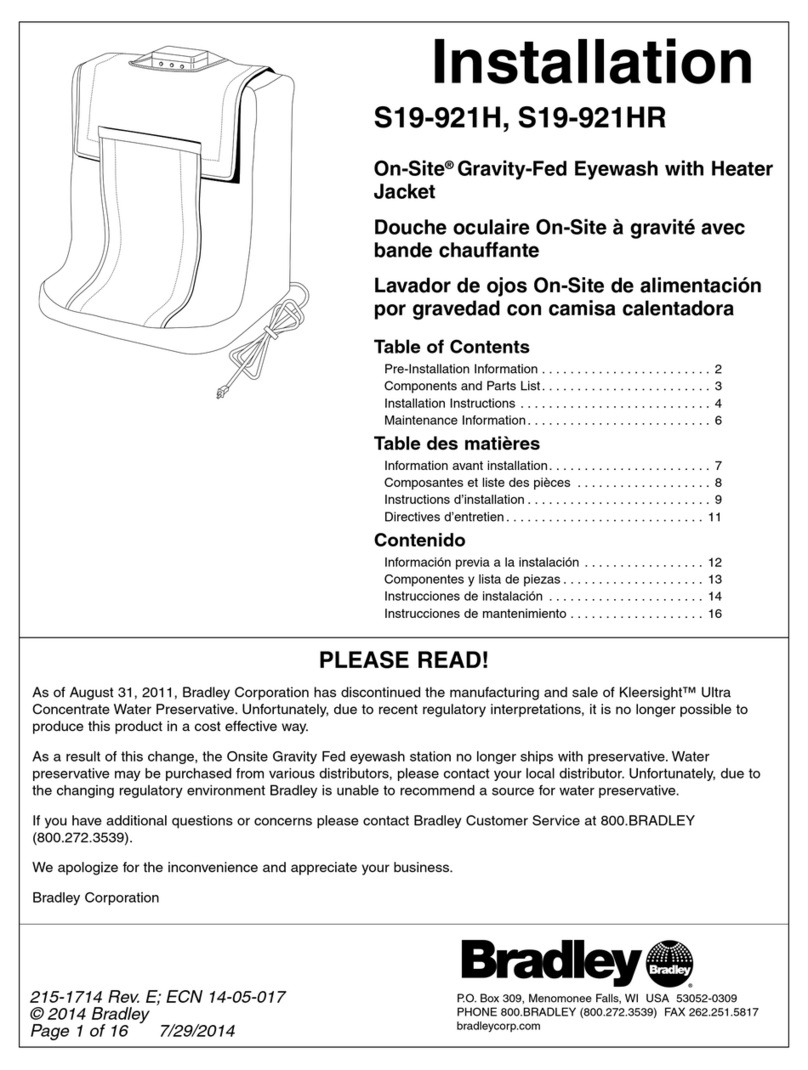
Bradley
Bradley S19-921H Installation
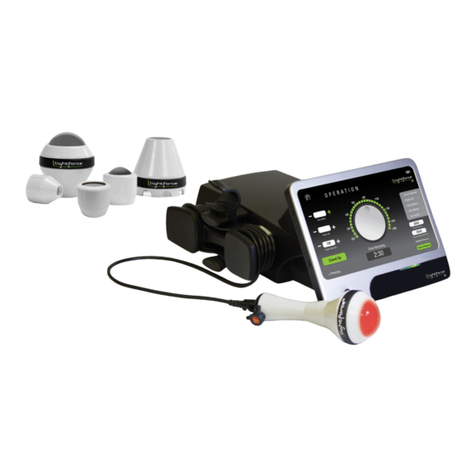
LiteCure Medical
LiteCure Medical LightForce FX user manual
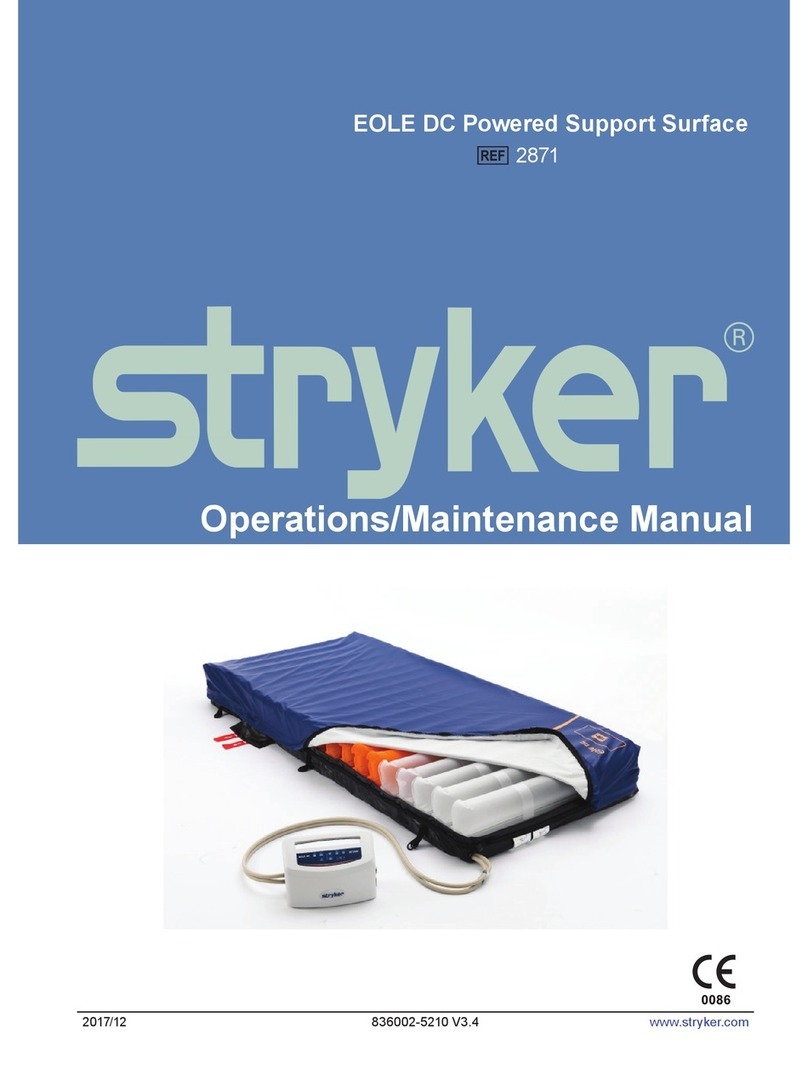
Stryker
Stryker EOLE DC 32" Operation and maintenance manual
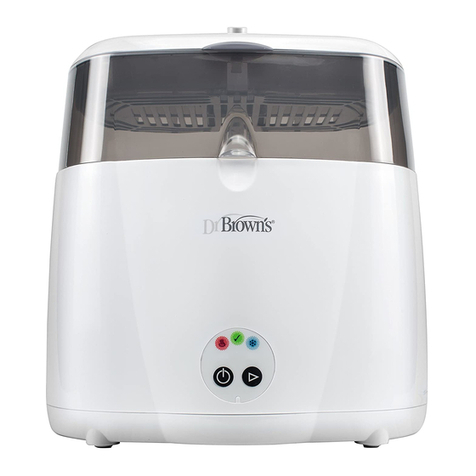
DrBrowns
DrBrowns Deluxe Bottle Sterilizer User instructions
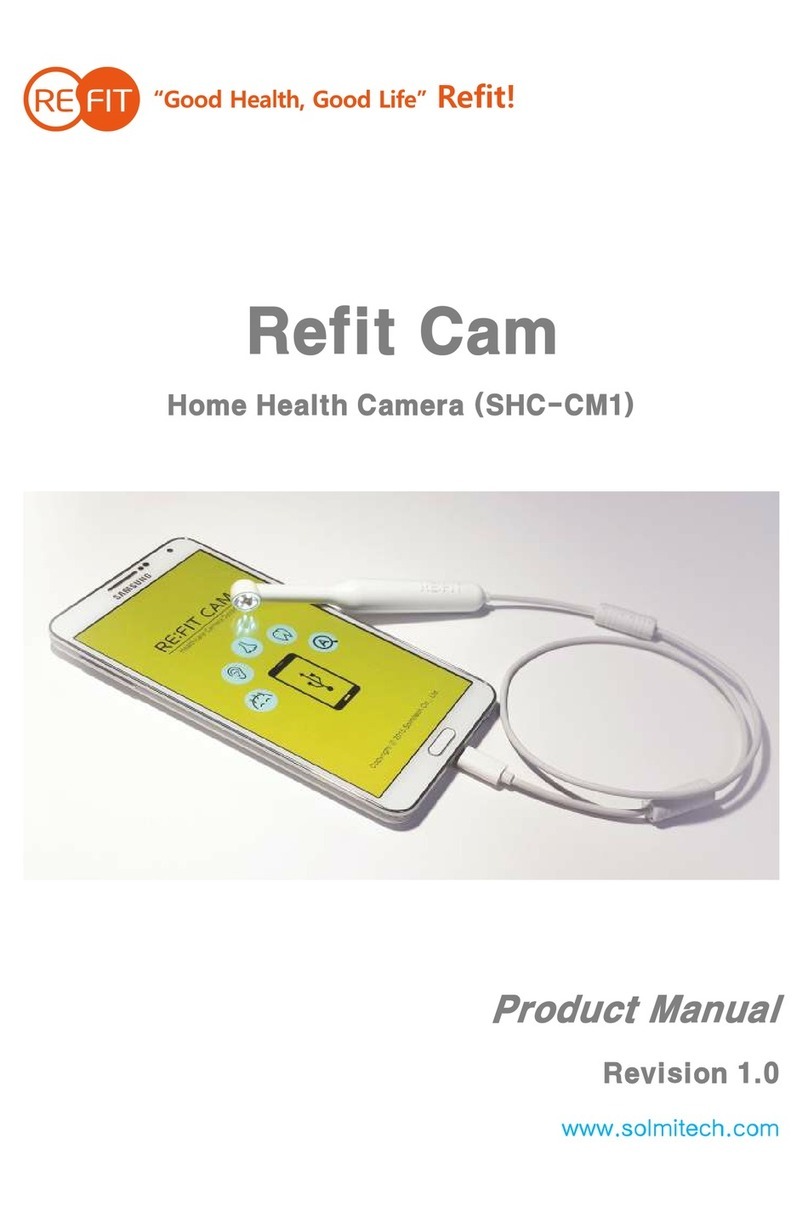
Refit
Refit SHC-CM1 product manual
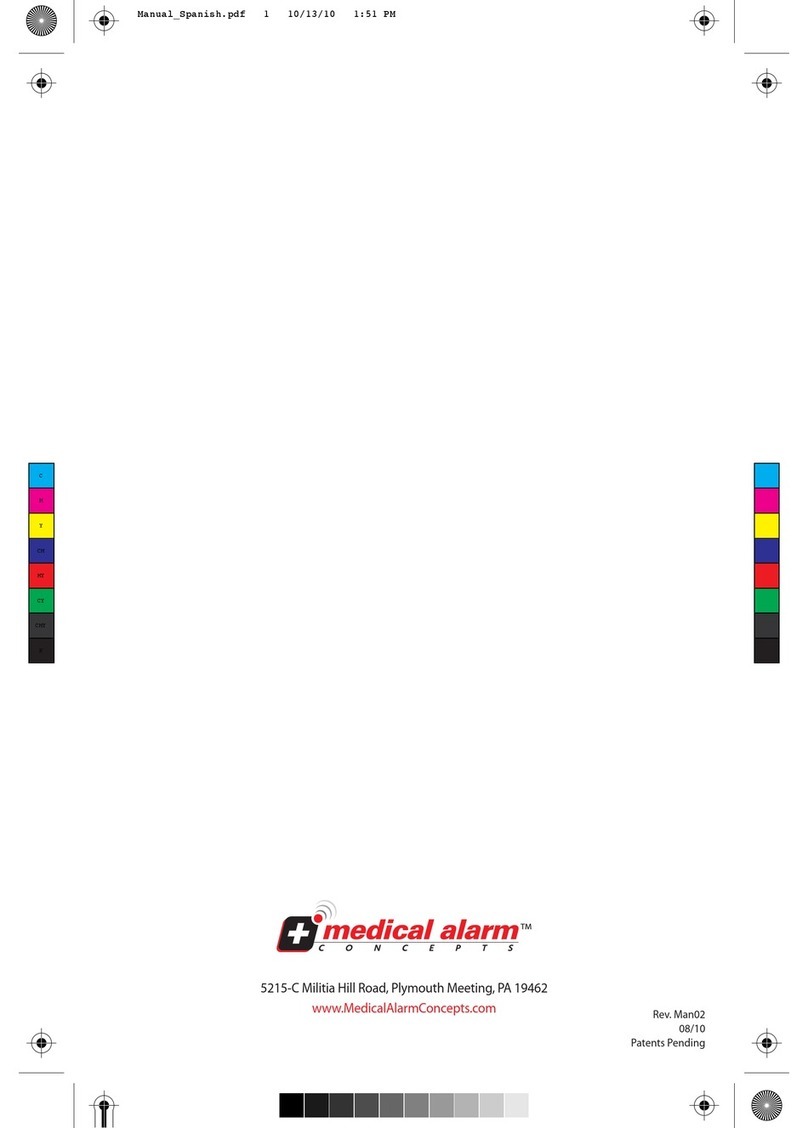
Medical Alarm
Medical Alarm MediPendant MED01 owner's manual
